Artemis: Goddess of The Hunt
Like this project
Posted Sep 28, 2023
A client hired me to write several informative pieces on Greek Goddesses, and this blog post centers around the Goddess of the Hunt, Artemis.
Likes
0
Views
3.2K
Artemis: Goddess of Hunting, Nature, and the Moon
Artemis, the goddess of hunting, nature, and the moon is a fascinating and complex figure in Greek mythology. Known as Diana in Roman mythology, Artemis was the daughter of Zeus and sister to Apollo. She is revered as a powerful and protective patron for young women and girls and is said to shield them during childbirth (Cartwright). But Artemis’s significance goes beyond her role as a protector of women as she embodies the untamed spirit of the forests, mountains, and wilderness, representing the balance and harmony of nature.
Overview of Artemis
As one of the twelve Olympian gods and goddesses, Artemis is a significant part of the ancient Greek pantheon, resonating deeply within the essence of their spiritual beliefs (Atsma). The name “Artemis” is believed to trace its origins to the Greek term “artemes.” This term, signifying attributes of “safety” or “soundness,” serves as a linguistic testament to her role as a guardian and protector, safeguarding the realms she oversees (“Artemis”). Her dual nature as both the goddess of the hunt and the embodiment of the moon has bestowed upon her a range of unique names and titles, each encapsulating a distinct aspect of her intricate character.
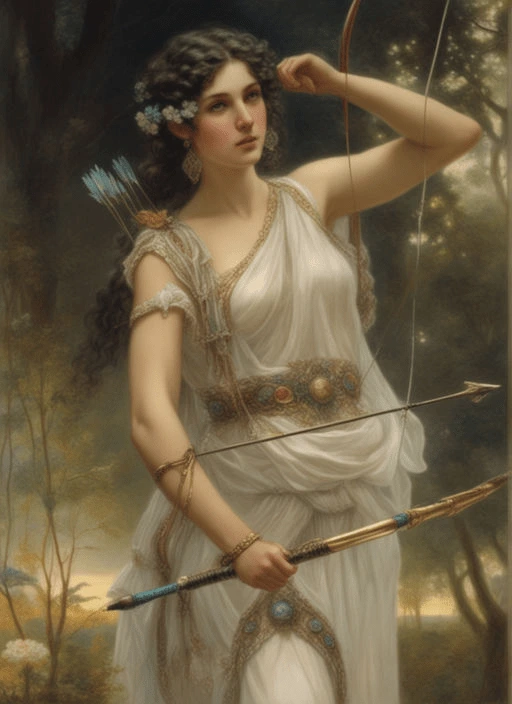
Source: Playground AI
Titles
Goddess of Childbirth
Virgin Goddess
Mistress of the Hunt
Lunar Deity
Abilities
Artemis is widely renowned for her exceptional talents as an archer. Her marksmanship is unparalleled, and her accuracy with the bow and arrow is nothing short of legendary. Throughout Greek mythology, Artemis has been hailed as the epitome of precision and skill, often depicted with a gleaming silver bow as a testament to her extraordinary archery abilities (Atsma). Beyond her mastery of the bow, Artemis’s dominion extends far beyond the bounds of Earth, reaching into the celestial expanse of the night sky.
Sometimes recognized as a goddess of the moon, she wields a unique authority over its various phases, from the radiant brilliance of the full moon to the enigmatic obscurity of the new moon. Her celestial influence extends even further, encompassing the manipulation of tides and the illumination of the nocturnal heavens, casting her as a symbol of the moon’s serene and mysterious aspects (Cartwright).
Characteristics
The goddess Artemis is widely recognized in Greek mythology for her unique allure and strength. Her physical and behavioral characteristics are distinct; she consistently embodies youth and vitality. Throughout depictions of her, she is often seen wearing a short hunting tunic, with a quiver of arrows slung over her shoulder and her bow confidently grasped. Her flowing hair and unwavering gaze emphasize her wild and untamed spirit, highlighting her role as the formidable Mistress of the Hunt (“Artemis”). Additionally, her striking features include her piercing eyes, which are said to resemble the moon, and her lithe and agile physique. In some accounts, Artemis is also depicted with a pack of hunting dogs at her feet, further emphasizing her prowess and affinity for the hunt.
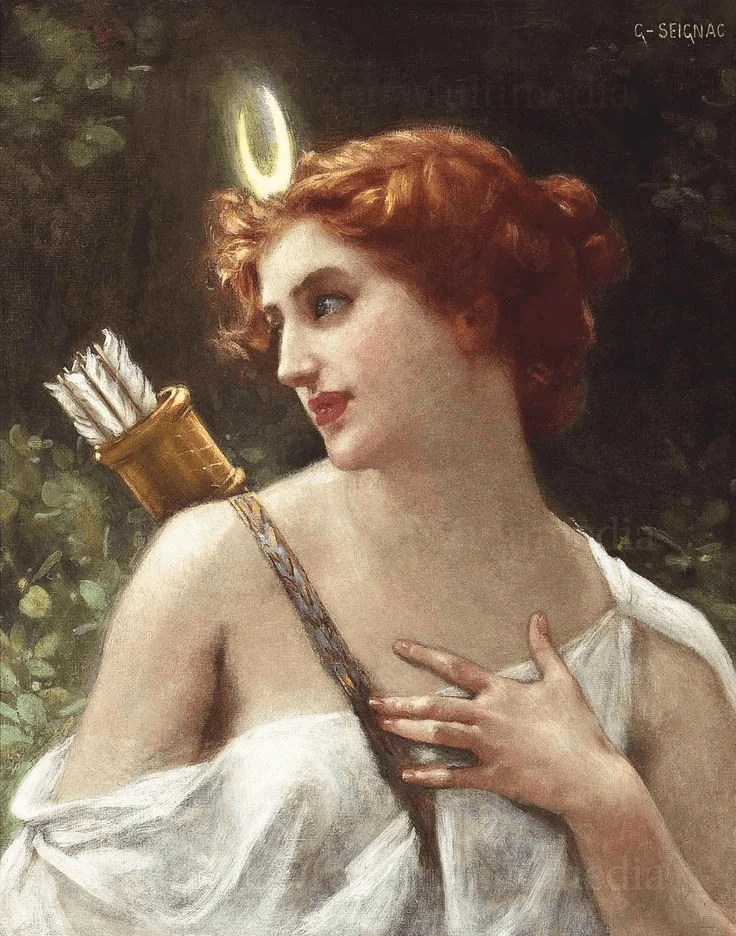
Source: Wikipedia
Traits
Artemis is a deity known for her fierce independence and unwavering commitment to self-reliance. She cherishes her freedom and embraces a life unencumbered by the bonds of marriage or submission to others. Her steadfast adherence to her vows of chastity highlights her unwavering dedication to her principles and beliefs. Additionally, Artemis is renowned for her persistent sense of justice and fairness, which emphasizes her role as a protector of the innocent and a guardian of nature. Her lunar deity nature displays a resolute determination to defend those who cannot protect themselves, taking swift and decisive action against any who dare to harm the vulnerable, be it animals or women. This commitment to justice elevates her status as a deity of moral integrity and righteous action.
Artemis’s character is multifaceted as she also demonstrates a nurturing side, particularly as a protector of women during childbirth (Cartwright). In this capacity, she reveals a compassionate and caring aspect of her character, which coexists harmoniously with her fierce independence and sense of justice, providing a well-rounded perspective of her divine personality.
Symbols
Artemis is often associated with the bow and arrow, symbolizing her unparalleled skill and prowess as a huntress (Atsma) and her commitment to protecting and preserving wildlife. These instruments are not mere tools but extensions of her divine authority and skill in the natural world.
Similarly, the crescent moon is a potent symbol intimately connected to Artemis, representing her role as the goddess of the moon (Cartwright) and reflecting her mysterious aspects. This celestial symbol serves as a reminder of her heavenly dominion, casting a gentle light upon the night sky and mirroring the cyclical nature of life itself. The deer, frequently portrayed as a companion of Artemis, is also a powerful symbol of the wildlife she protects (“Artemis”), embodying her divine nature and commitment to safeguarding the untamed wilderness. Collectively, these symbols offer a rich and nuanced understanding of Artemis, illuminating her multifaceted character and dedication to preserving the beauty and balance of the natural world.
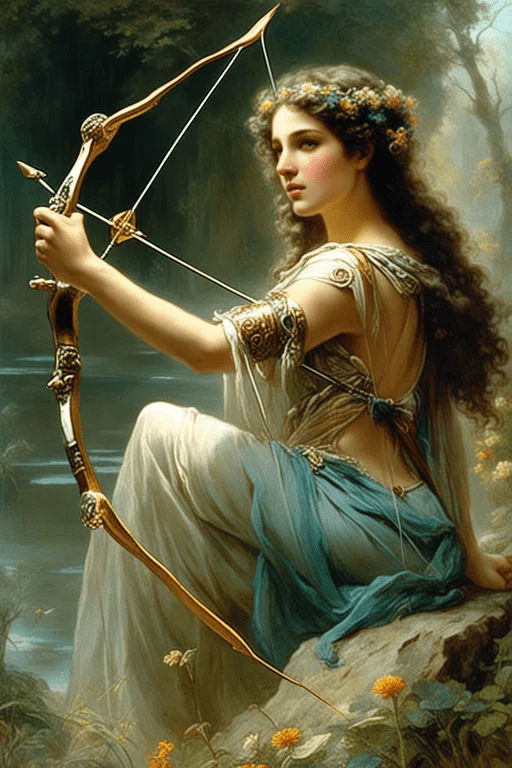
Source: Playground AI
Earliest representations of Artemis
The representation of Artemis in ancient Greek art and literature provides a captivating glimpse into her enduring power and influence within the pantheon of Olympian deities. Artemis was celebrated and venerated in various regions as a prominent figure in Greek mythology, with each culture weaving its unique tapestry of reverence around her multifaceted character.
The worship of Artemis was further characterized by rituals and festivals that paid homage to her various attributes. From the grand festivities of Brauronia to the more intimate ceremonies conducted in sanctuaries and temples dedicated to her, these observances highlighted her roles as the Mistress of the Hunt, the Lunar Deity, and the protector of women in childbirth (Wikipedia Contributors). Artemis’s all-round nature was celebrated and honored through these practices, solidifying her status as a central figure in the ancient Greek pantheon.
Artemis as “The Wild Goddess”
The portrayal of the goddess Artemis in ancient Greek art and poetry depicted her as a formidable and fearless huntress, showcasing her skill and prowess as an archer and hunter. These visual narratives emphasized her fierce independence and unwavering connection to nature (“Artemis”) as she roamed the untamed wilderness. Artemis’s affinity for the wild and ability to thrive in challenging environments made her a beloved figure among those who sought to live in harmony with nature (Wikipedia Contributors). She was revered as an embodiment of the earth’s untamed and primordial forces; her strength, skill, and unyielding connection to the wilderness made her a symbol of the natural world’s fierce beauty and intrinsic power.
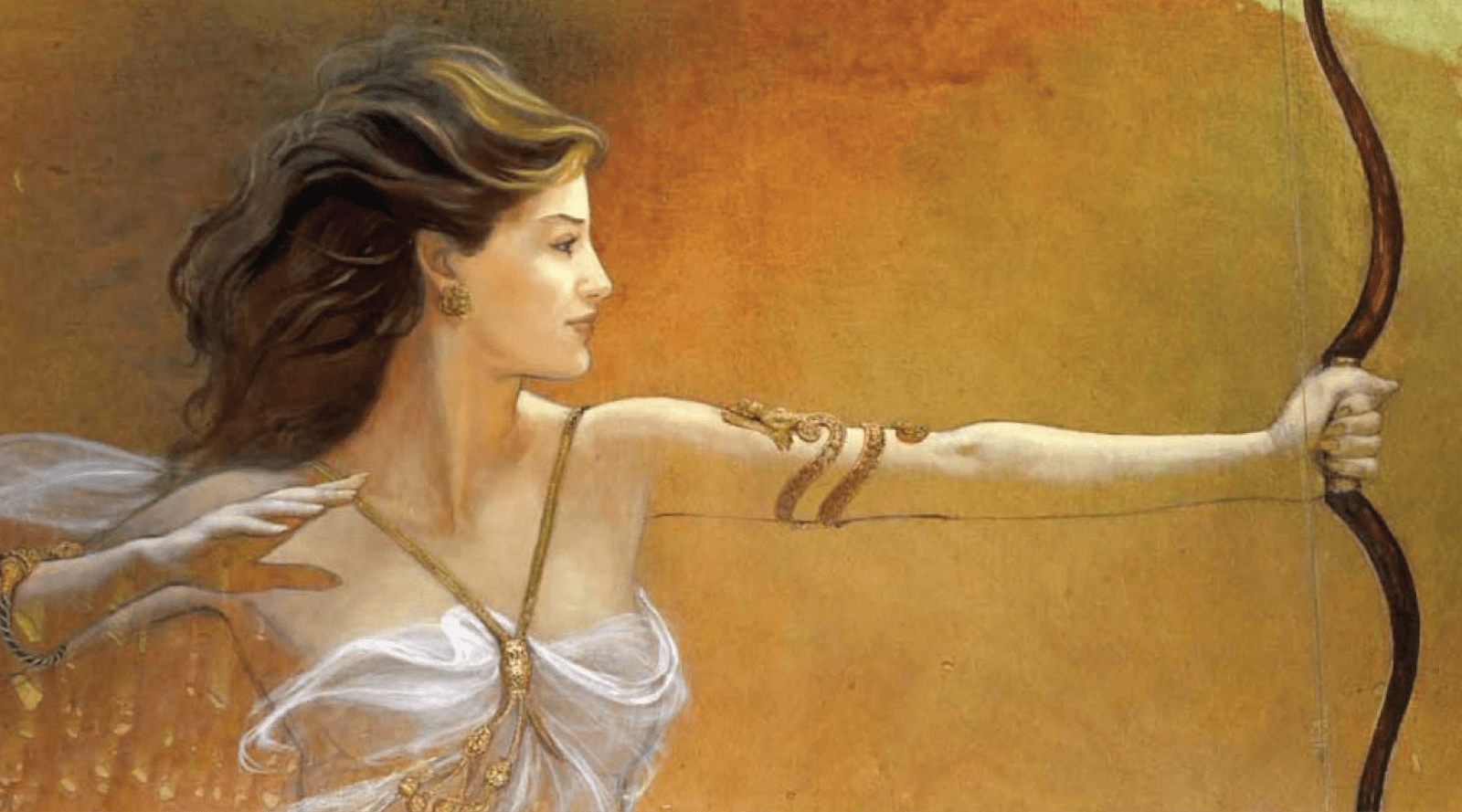
Source: The Artemis Woman
Artemis as Mother
Artemis, a prominent figure lately known for her commitment to chastity and independence, displays a fascinating duality beyond her virtue. Certain depictions showcase her as a nurturing and protective mother figure, embodying qualities of compassion and guardianship (Cartwright). As a protector of women during childbirth, she oversees the safety and well-being of both mothers and their newborns. This aspect of her character highlights a profoundly caring and benevolent side, countering the image of the fierce huntress with maternal tenderness (“Artemis in Greek Mythology”). Artemis’s multifaceted nature as both a protector of nature and a guardian of women in the vulnerable moments of childbirth reflects the complexity of her character within Greek mythology. This duality underscores her capacity for strength and compassion, encapsulating the intricate layers of her divine persona.
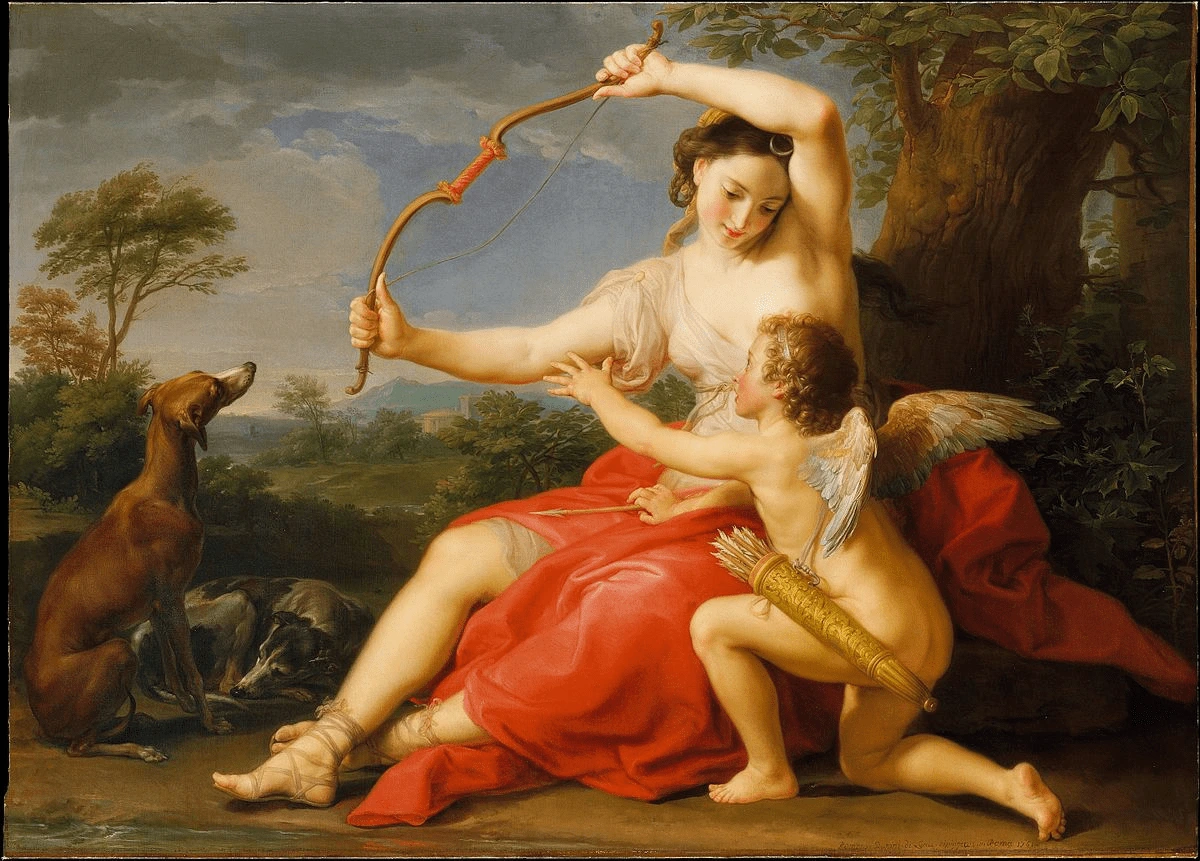
Source: Greek Reporter
Many breasted Artemis
The statue known as “Many-Breasted Artemis,” discovered in present-day Turkey, is one of the most intriguing representations of the goddess. This sculpture may initially puzzle observers by depicting multiple rows of breasts on her chest. However, this imagery carries significant symbolism, highlighting Artemis’s nurturing and life-giving qualities (“Artemis”). In this unique form, Artemis is closely associated with fertility and safeguarding women during the sacred phases of pregnancy and childbirth (Wikipedia Contributors). The proliferation of breasts represents her maternal and protective role in these pivotal moments of a woman’s life. It symbolizes her capacity to nurture and sustain life, emphasizing her compassion and dedication to safeguarding the well-being of both mothers and infants (“Artemis”).
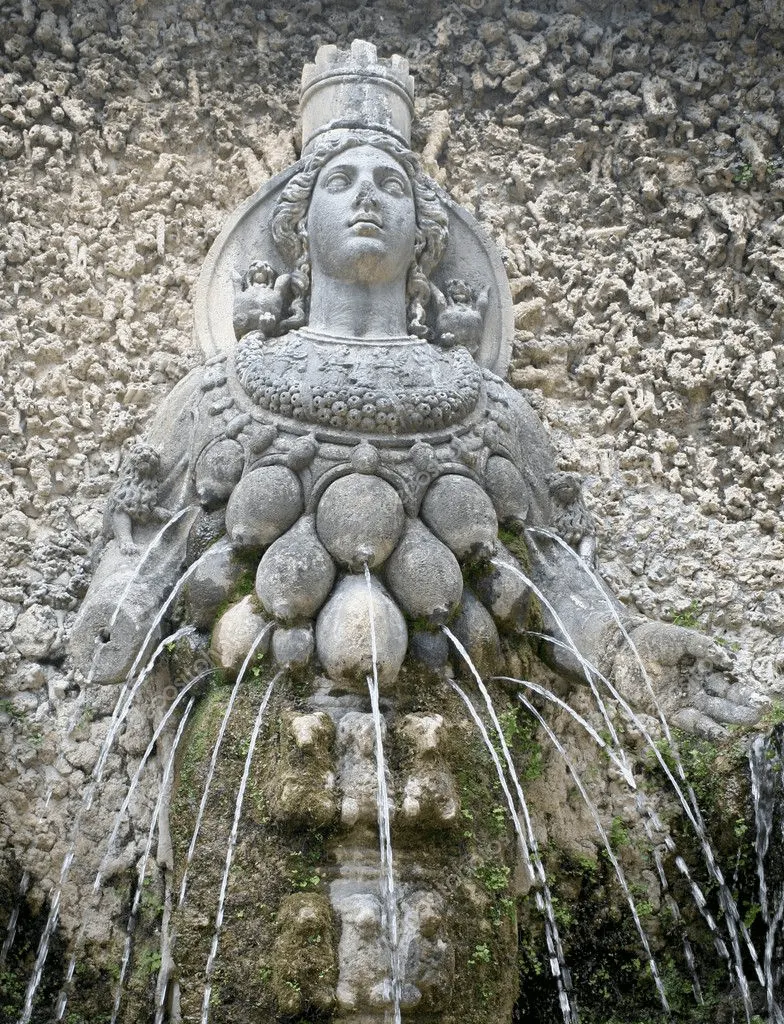
Source: Depositphotos
Olympian legends
In ancient Greek culture, the goddess of the hunt and the moon was an object of deep fascination and admiration. Her mythology and legends are filled with intricate details that reveal a complex character who has captured people’s imaginations for centuries. From her fierce and skilled hunting abilities to her association with the moon, this goddess has remained an enduring symbol of strength, power, and mystery. Her stories have been told and retold countless times, each time revealing new facets of her personality and adding to the richness of her mythology. As a protector of women and a fierce warrior, Artemis continues to fascinate and inspire people worldwide.
Origin story
Artemis’s origin story is linked to her twin brother, Apollo, and their divine parentage. According to Greek legend, Artemis and Apollo are the offspring of Zeus, the supreme deity of Olympus, and Leto, a Titaness.
The tale commences with Hera, the queen of the gods and Zeus’s wife, who harbored intense jealousy and resentment towards Leto due to her relationship with Zeus. In her vengeful fury, Hera relentlessly pursued Leto, preventing her from giving birth on any land. This pursuit left Leto in a dire predicament as she struggled to find a place to bring her children into the world. Leto eventually discovers refuge on the floating island of Delos, a place untouched by the mainland and the wrath of Hera (Atsma). It was on this sacred island that Artemis and Apollo were born, their arrival signifying the end of Leto’s arduous journey and the beginning of their extraordinary destinies as divine siblings. The unique circumstances of their birth not only emphasize the challenges faced by their mother but also underscore the exceptional nature of Artemis and Apollo within the Greek pantheon.
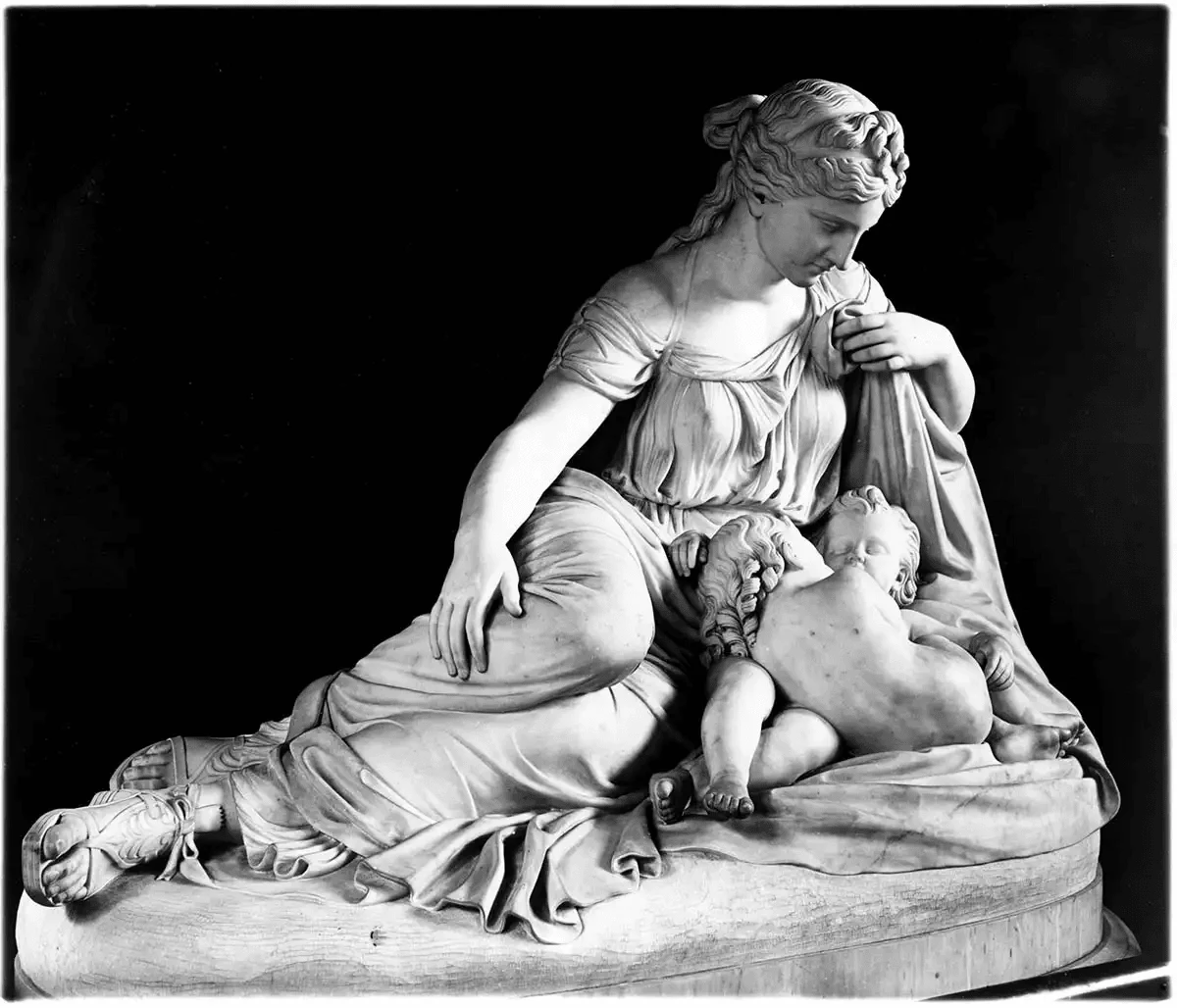
Source: TheCollector
The Cautionary Tale of Actaeon
One of the most famous legends involving Artemis centers around the unfortunate fate of Actaeon, the mortal hunter. Actaeon, while hunting in the woods, inadvertently stumbled upon Artemis while she was bathing in a secluded pool with her nymphs. Seeing the goddess in her vulnerable state, Actaeon was overcome with curiosity and stared at her, violating her privacy. In response, Artemis, outraged by Actaeon’s intrusion, transformed him into a stag, condemning him to roam the wilderness as prey for his hunting dogs. This transformation was a cruel but fitting punishment, aligning with Artemis’s role as the protector of the natural world and wildlife (Wikipedia Contributors).
The story of Actaeon serves as a cautionary tale about the dangers of violating boundaries and intruding on the privacy of others. While it may have been tempting for Actaeon to peek at the bathing goddess, his curiosity ultimately led to his downfall. Artemis’s punishment was swift and severe, and it serves as a reminder that even the mightiest of mortals are no match for the power of the gods.
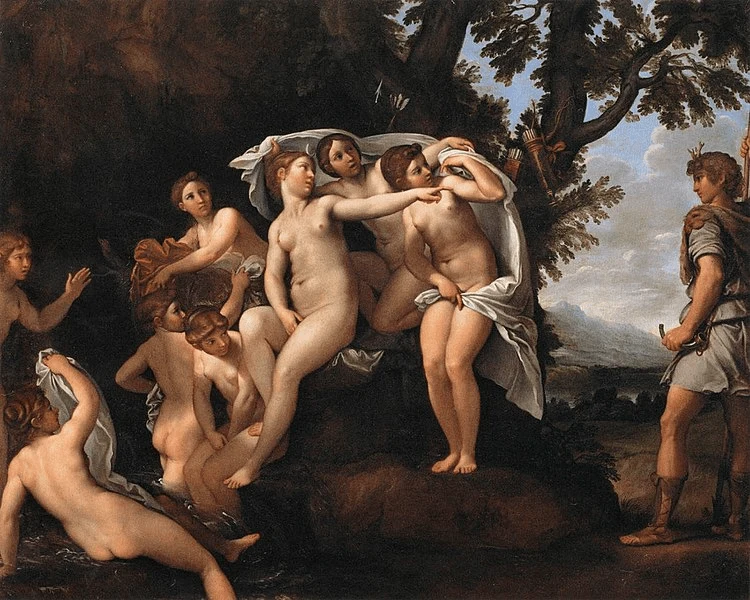
Source: Wikimedia Commons
Immortalized in the stars
The mythology surrounding Artemis includes a captivating legend that centers on her close relationship with Orion, a renowned hunter and giant. This tale reveals the depth of their bond and shared passion for the hunt, as they often embarked on hunting expeditions together, demonstrating their camaraderie. Unfortunately, their story takes a tragic turn when Orion is fatally stung by a giant scorpion dispatched by Gaia, the Earth goddess, to protect her creatures from his relentless hunting. Profoundly devastated by the loss of her beloved companion, Artemis chose to immortalize Orion as a lasting tribute to their enduring friendship and shared pursuits. She placed him among the stars, where he became the constellation Orion, forever lighting the night sky (Atsma).
This poignant legend underscores Artemis’s connection to the hunting world and reveals her capacity for deep emotions and unwavering loyalty to her mortal companions. It paints a vivid portrait of Artemis as a goddess who could form profound bonds and experience profound grief despite her formidable and independent nature, immortalizing those she cherished in the celestial tapestry of the cosmos.
Influences of other religions/cultures on Artemis
The cross-cultural influence of Artemis extended beyond the borders of Greece, leaving a lasting mark on neighboring civilizations. This influence is most notably seen in her association with the Roman goddess Diana, which serves as a testament to the interconnectedness of mythological traditions. Diana, the Roman counterpart to Artemis, shared striking similarities in their divine domains and attributes, revered as deities of the hunt and the moon, embodying aspects of the natural world and celestial realms (Atsma). The congruence between the two goddesses’ characteristics resulted in a syncretism between them.
Modern appearances
Artemis continues to exert a profound influence on contemporary culture, particularly within the realm of literature, where esteemed authors such as Rick Riordan have interwoven her essence and that of her steadfast followers, the “Hunters of Artemis,” into their narratives. These modern adaptations place Artemis and her entourage into contemporary settings, breathing new life into her age-old mythology.
Moreover, Artemis has transcended the boundaries of classical mythology to become inextricably linked with NASA’s ambitious lunar mission, aptly named “Artemis” after the Greek goddess of the moon and her twin brother, Apollo. This program’s name forges a connection between Artemis and the Apollo mission, which 50 years ago first landed humans on the moon.

Source: NASA
Final thoughts
Artemis embodies the splendor of untamed nature, the might of female deities, and the timeless charm of ancient mythologies. Her myths, passed down through the ages, continue to enthrall and inspire modern audiences. They remind us of ancient mythologies’ enduring significance and profundity in shaping our comprehension of the natural world and the human experience. As her diverse persona is further explored in literature, film, and other forms of artistic expression, Artemis remains an eternal muse, beckoning us into the captivating realm of her mythology, where the moon and wilderness hold secrets waiting to be discovered by those who dare to venture into her enchanting domain.
References
“Artemis.” Mythopedia, mythopedia.com/topics/artemis.
“Artemis in Greek Mythology.” Study.com, 2022, study.com/learn/lesson/artemis-goddess-greek-mythology.html.
Atsma, Aaron J. “ARTEMIS – Greek Goddess of Hunting & Wild Animals.” Theoi Greek Mythology, Theoi Project, 2000, www.theoi.com/Olympios/Artemis.html.
Cartwright, Mark. “Artemis.” World History Encyclopedia, Mark Cartwright, 24 July 2019, www.worldhistory.org/artemis/.
Wikipedia Contributors. “Artemis.” Wikipedia, Wikimedia Foundation, 13 Dec. 2018, en.wikipedia.org/wiki/Artemis.







